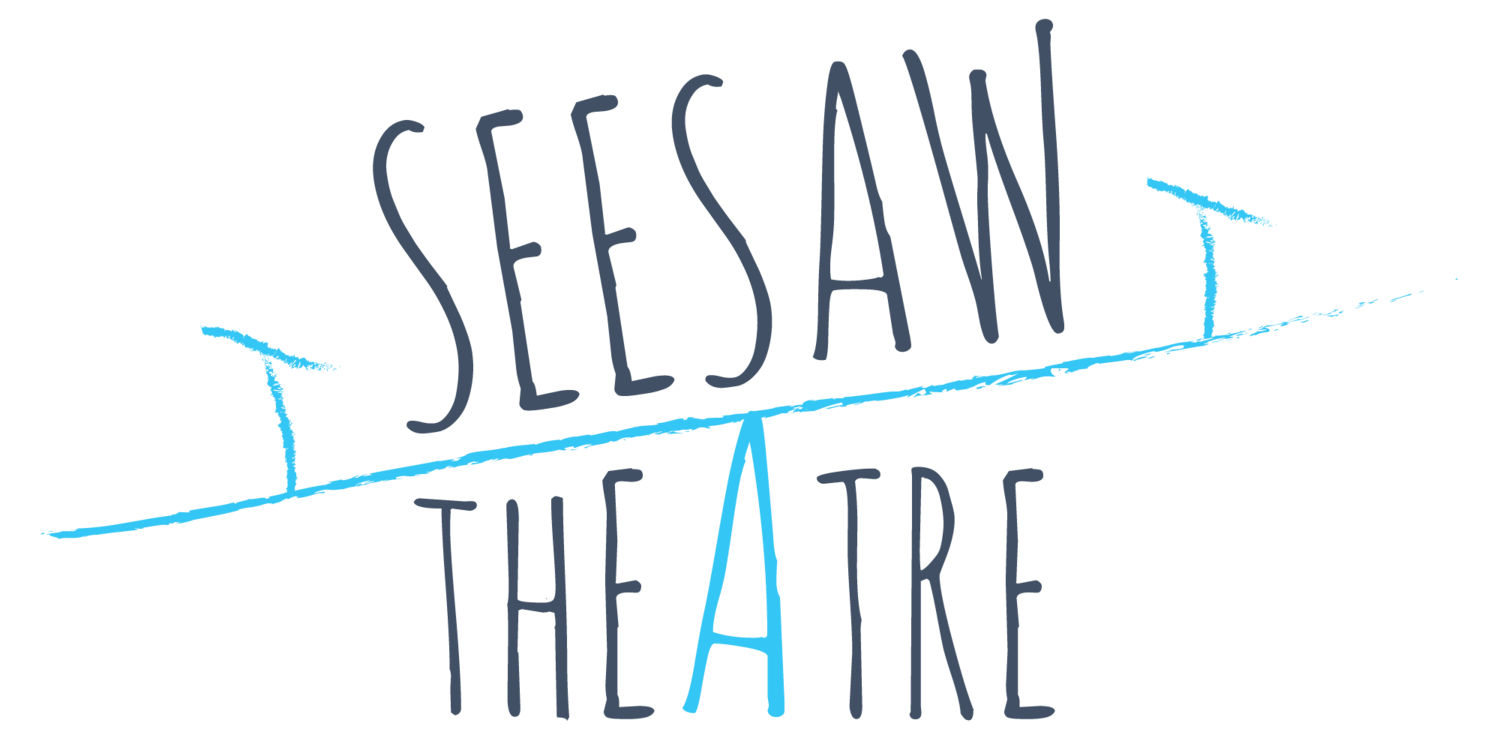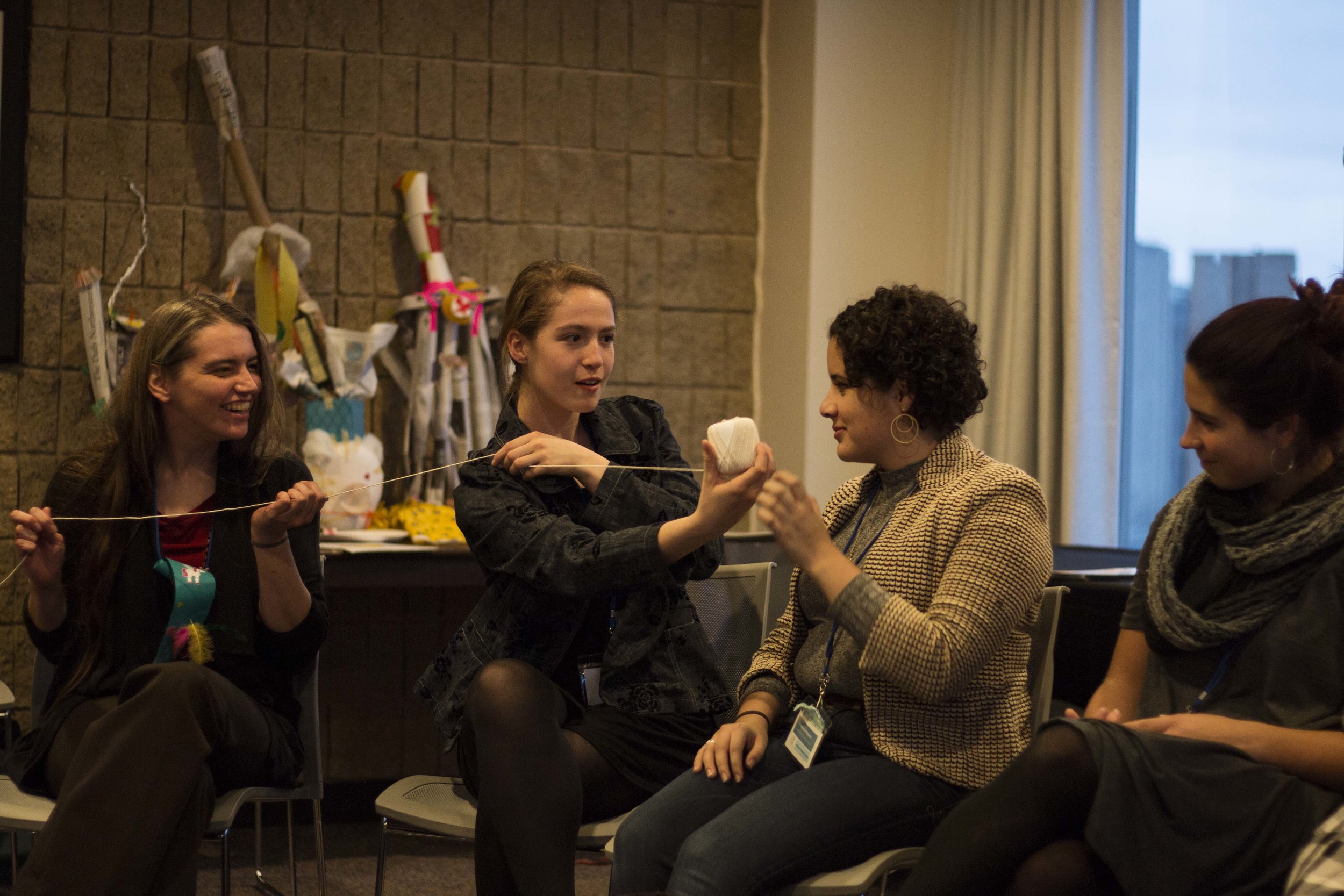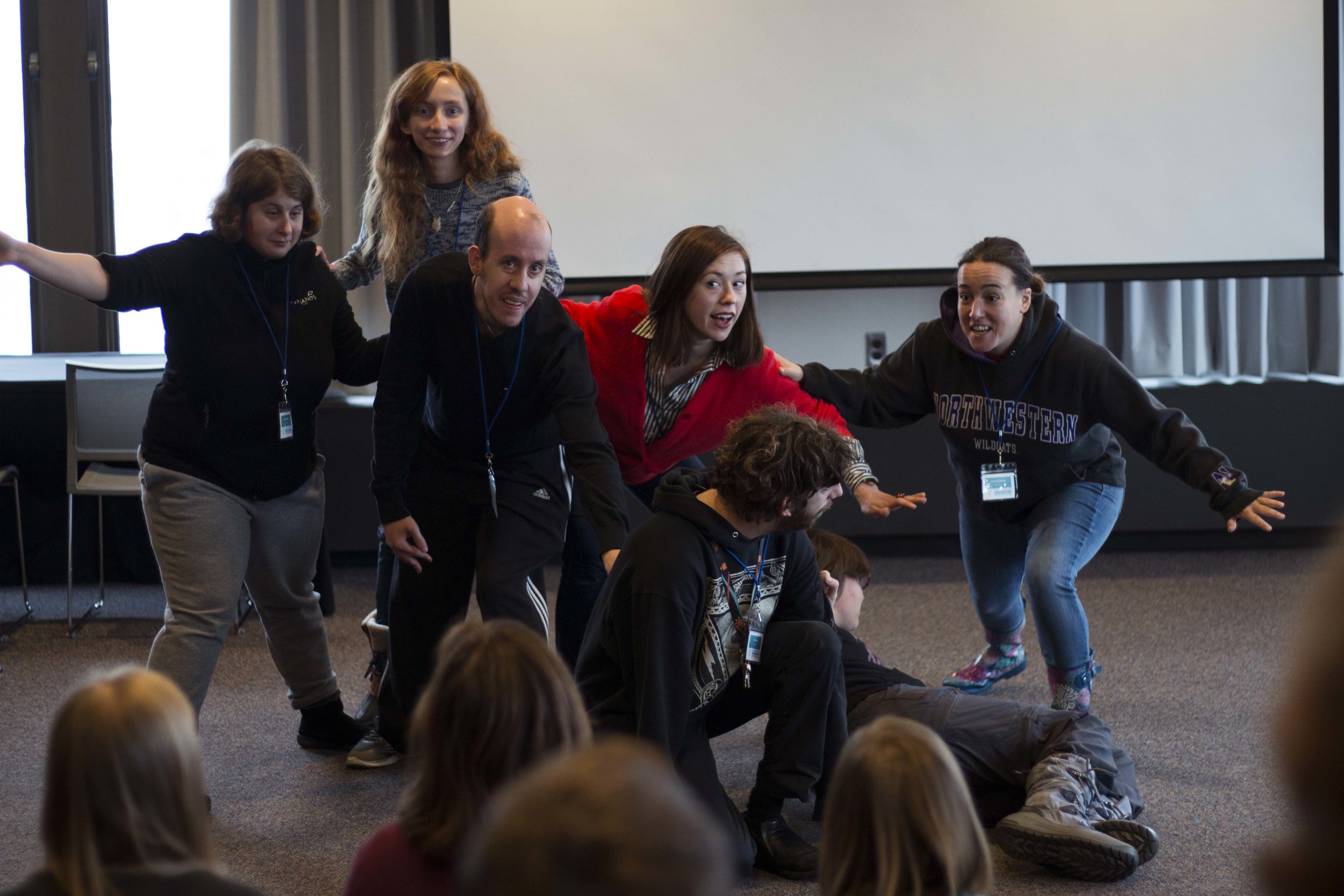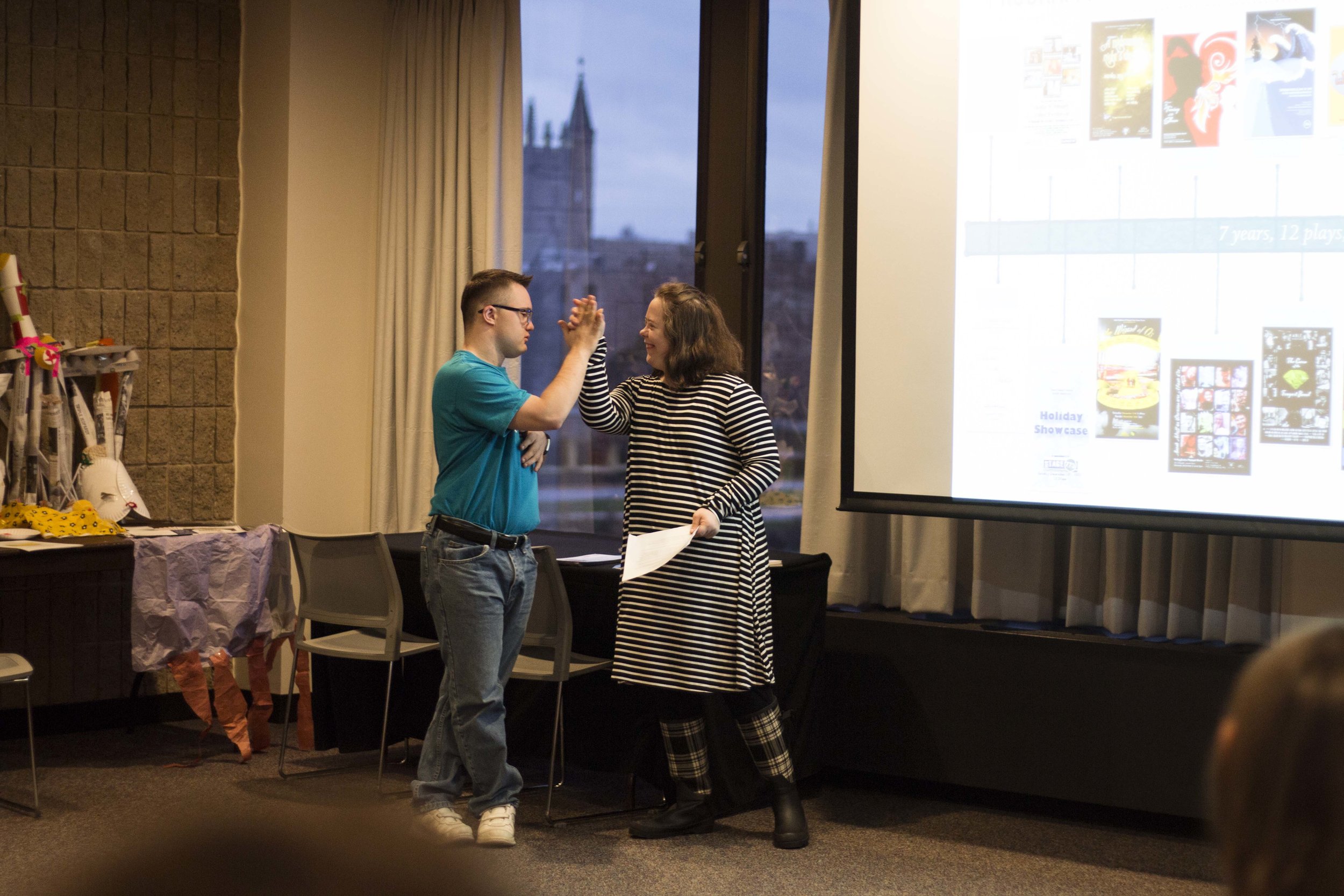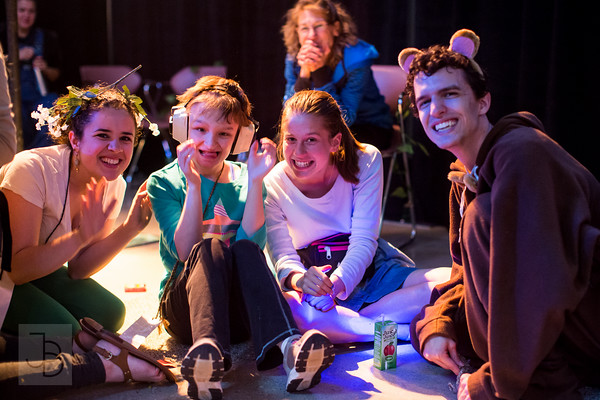This past week, eleven Seesaw humans reunited in New York City to give a presentation at the American Alliance for Theatre and Education’s 2019 conference. AATE is an organization of theatre educators whose mission it is to transform young people and their communities through theatre. This year, the AATE conference focused on equity, inclusion, and accessibility, and it included presentations and workshops from a variety of theatre companies, researchers, and educators. Our Seesaw attendees enjoyed five action-packed days of learning, listening, and exploring together.
We are so grateful to have had the opportunity to present at this conference and to share a little bit of Seesaw magic with theatre artists and educators from across the country. Seesaw’s interactive workshop, entitled “Behind the Scenes at Seesaw: Interactive Multi-Sensory Theatre for Children with Cognitive Differences”, focused on our techniques and strategies when devising original material for audiences on the autism spectrum and with other cognitive differences. Our workshop began with a performance of part of our spring mainstage production of Clued Inn, an original devised piece centered around a hotel mystery which incorporated music, a cast of characters and Adventure Guides, and experiences for all six senses. Next, we led our workshop attendees in an interactive devising activity of their own as a way to experience a moment from our typical devising process for a multi-sensory theatrical experience like Clued Inn. Then, members of Seesaw led our workshop attendees in a reflection period and Q&A session discussing the feasibility and benefits of this work in a university setting.
Aside from our own presentation, our Seesaw Theatre presenters got to experience a number of dynamic workshops, presentations, and lectures while attending the conference. Impactful and thought-provoking keynote speeches were delivered by artist and scholar Dr. Lizzy Cooper Davis, writer and activist Kayhan Irani, playwright Alexis Roblan, and interdisciplinary artist Ty Defoe. In just one of the weekend’s many memorable moments, New York City’s All In(clusive) Theatre Ensemble delivered a spectacular performance of their own devised work. Another HUGE highlight was the presentation of the Outstanding Undergraduate Award to Seesaw Theatre’s very own 2018-2019 Artistic Director, Rachel Seidenberg! Rachel was recognized for her dedication to Seesaw Theatre and love for its multi-sensory, inclusive work. Here at Seesaw, we couldn’t be more proud of Rachel and can’t wait to see what she does in the years to come!
We truly cannot express enough our gratitude to be able to attend and present at AATE 2019! We treasured the opportunity to play, think, and grow alongside so many other incredible theatre artists and educators. Thank you AATE!
Workshop participants creating their own sensory experiences!
Sequin flip fabric is ALWAYS a hit!
